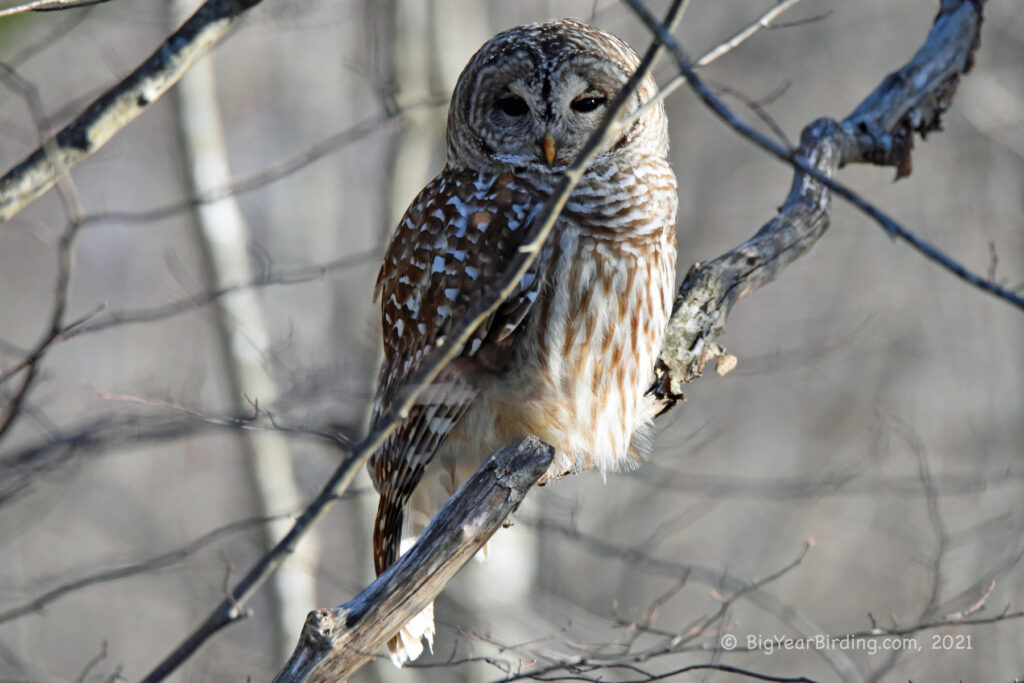The Barred Owl (Strix varia) is a large, round-headed owl that is found throughout much of North America. They are known for their distinctive “who cooks for you, who cooks for you all” call and their beautiful brown and white barred plumage. Barred Owls are large birds, with a length of around 16-25 inches (40-63 cm) and a wingspan of around 38-50 inches (96-127 cm). They weigh between 16-37 ounces (450-1050 g), with females typically being larger than males.
One of the most distinguishing field marks of the Barred Owl is its facial disk. This disk is a circular pattern of feathers that surrounds the owl’s eyes and helps to focus sound waves towards the bird’s ears. The Barred Owl also has dark eyes and a large, curved beak that is designed for tearing apart prey. The bird’s plumage is also distinctive, with brown and white bars on the head, wings, and tail.
Barred Owls are typically non-migratory birds, although there is some evidence to suggest that they may move to lower elevations during the winter months. They are also known to disperse from their breeding areas in search of food during the non-breeding season. Barred Owls are found in a variety of forested habitats, including deciduous and coniferous forests, swamps, and riparian areas.
One interesting aspect of Barred Owl behavior is their willingness to nest in suburban and urban areas. They will readily use nest boxes that are placed in appropriate habitats, such as wooded backyards or city parks. This adaptability has allowed the Barred Owl to thrive in many parts of its range, despite habitat fragmentation and loss.

In terms of diet, the Barred Owl is a generalist predator that feeds on a variety of prey, including small mammals, birds, reptiles, amphibians, and invertebrates. They are known to hunt both during the day and at night, and will often hunt from a perch, swooping down to grab prey with their sharp talons. Barred Owls are important predators in many ecosystems, and their presence can help to regulate populations of small mammals and other prey species.


